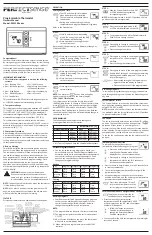
-
44
-
9.1 The Ratio Principle
The 2-color ratio technology makes possible accurate and repeatable temperature measurements that are
free from dependence on absolute radiated energy values. In use, a 2-color sensor determines temperature
from the ratio of the radiated energies in two separate wavelength bands (colors). The benefits of 2-color
sensors are that accurate measurements can be made under the following conditions:
► When the field of view to the target is partially blocked or obscured.
► When the target is smaller than the sensor’s field of view.
► When target emissivity are low or changing by the same factor in both wavelength bands.
Another benefit is that 2-color sensors measure closer to the highest temperature within the measured spot
(spatial peak picking) instead of an average temperature. A 2-color sensor can be mounted farther away,
even if the target does not fill the resulting spot size. The convenience is that you are not forced to install the
sensor at some specific distance based upon ta
rget size and the sensor’s optical resolution.
Partially Obscured Targets
The radiated energy from a target is, in most cases, equally reduced when objects or atmospheric materials
block some portion of the optical field of view. It follows that the ratio of the energies is unaffected, and thus
the measured temperatures remain accurate.
A 2-color sensor is better than a 1-color sensor in the following conditions:
► Sighting paths are partially blocked (either intermittently or permanently).
► Dirt, smoke, or steam is in the atmosphere between the sensor and target.
► Measurements are made through items or areas that reduce emitted energy, such as grills, screens,
channels or small openings.













































